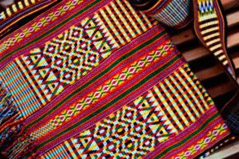
Using clothing, jewellery, lifestyle, and artefacts, each community in Arunachal Pradesh expresses who they are. Being a state with a variety of communities, the various tribes here distinguish themselves in part through the handcrafted goods they produce, like textiles and handlooms. Colours like bright red, black, yellow, blue, and green are preferred by the majority of the communities in this region. While some of the themes on the fabric have been borrowed from nearby or neighbouring locations, the majority of the designs are inspired by homegrown sources. The elaborate patterns or decorations that adorn the fabric have profound symbolic meaning. The complex processes of spinning, dying, and finally weaving the textiles are carried out by most of the women in the region. The multiple tribes have diverse textile designs and styles, as well as different methods and equipment utilised in the production of textiles.
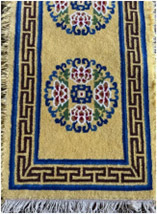
Women from the Monpa group, an Arunachal Pradesh Buddhist community, are primarily represented in the field of carpet weaving. It is a tradition that is passed down from generation to generation as women receive training in the art of carpet weaving from a young age. The two main materials used in carpet weaving are wool and cotton. These exquisite carpets exhibit vivid colours and intricate designs featuring dragons, flowers, and geometric shapes, which are symbolic of the Tibetan-Buddhist influence prevalent in the area. The wool's colours were originally achieved by utilising vegetable and other natural dyes; however, synthetic dyes and other chemicals are gradually taking their place.
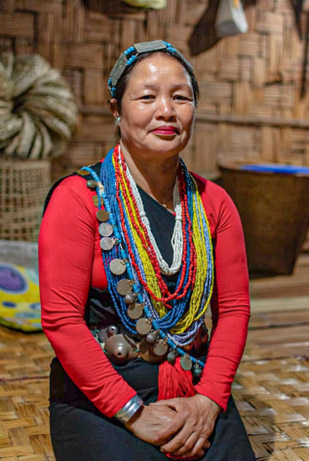
The jewellery made in Arunachal Pradesh blends natural elements like bamboo, feathers, glass beads, and wild seeds with metals like gold, silver, and brass. Numerous native ethnic groups craft ornaments from the feathers of birds and the wings of green beetles. Feather headpieces and multicoloured beaded jewellery are popular bridal decorations for tribal cultures of Arunachal Pradesh. Some tribal societies create bangles and earrings out of bamboo.
In addition to the multicoloured beads used in the ornaments of Arunachal Pradesh, brass is widely used, with silver also receiving a mention. Because of the differences across the tribes, there are variations in the principle of the design of these ornaments. When paired with the state's traditional attire, these ornaments complete the appearance of an Arunachal Pradesh’s native.
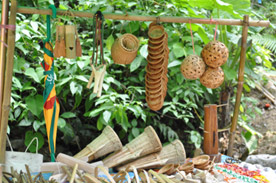
Crafts made of cane and bamboo are an important part of Arunachal Pradesh's craft tradition. The state is home to a variety of tribal communities, therefore the locals and tribals in the area use these materials to create extremely decorative and artistic everyday objects, such as baskets, bags, containers, hats, cane belts, bottles, etc. Each tribe has its own unique way of creating crafts made of cane and bamboo; they create their own bags, caps, cane belts, and in some parts of the northern region, the tribals even weave intricate brassieres made of cane fibre.
Men are the only ones who make cane and bamboo crafts in Arunachal Pradesh. The most popular items manufactured from these materials include baskets, containers, headdresses, bows and arrows, shoulder bags, mats, etc. Depending on the tribe that makes them, each of these everyday items has a different design.
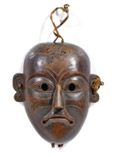
The carved handmade products are abundant in natural beauty and natural resources , and are fashioned from a range of woods, not just cane and bamboo. Numerous styles and forms of wood carving can be found. It is common to find wooden houses in Arunachal Pradesh with elaborate carvings on them. Tobacco pipes, bowls, spoons, drinking cups, wooden masks, dancer figures, religious representations, and so forth are some other items made of wood. Several ethnic tribes depict motifs in the form of human or animal heads on tobacco pipe bowls. Other groups also sculpt warrior figurines onto drinking mugs and bowls, empowering the items with a sense of realism and strength. Certain local tribes, such as the Monpas, also exhibit votive or ceremonial influence through the use of Buddha statues, wooden masks, painted wooden utensils, and other items. Each state's region and tribe have a different style of carving on their wooden masks.